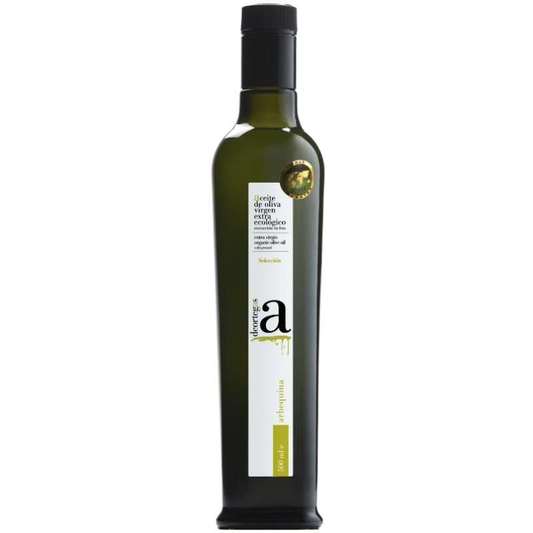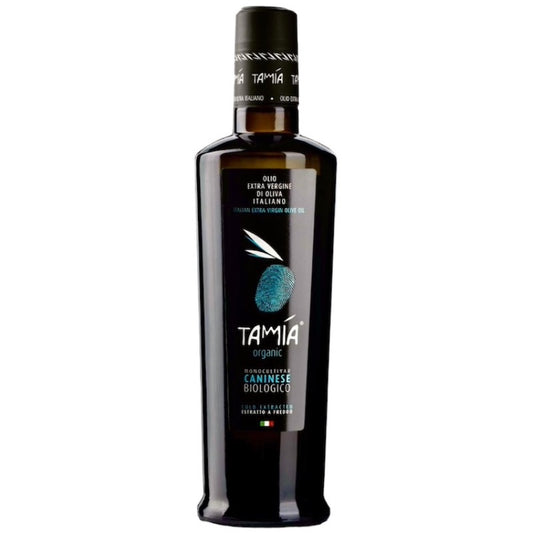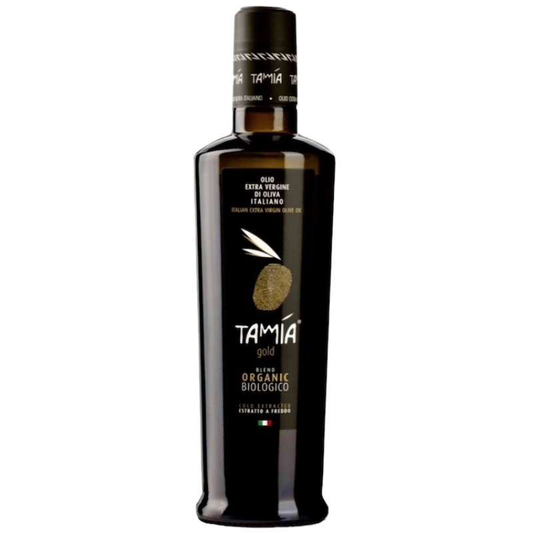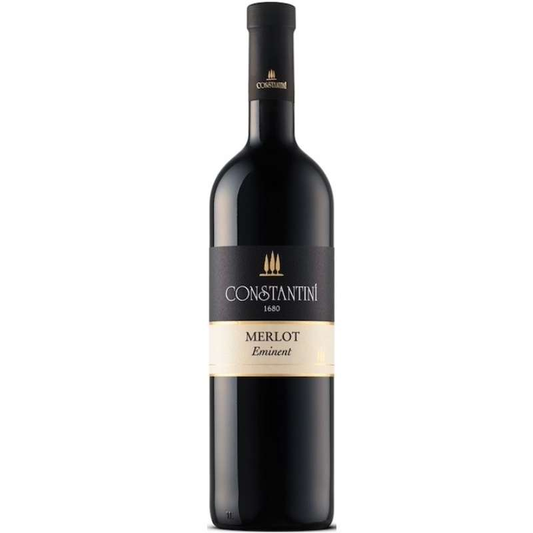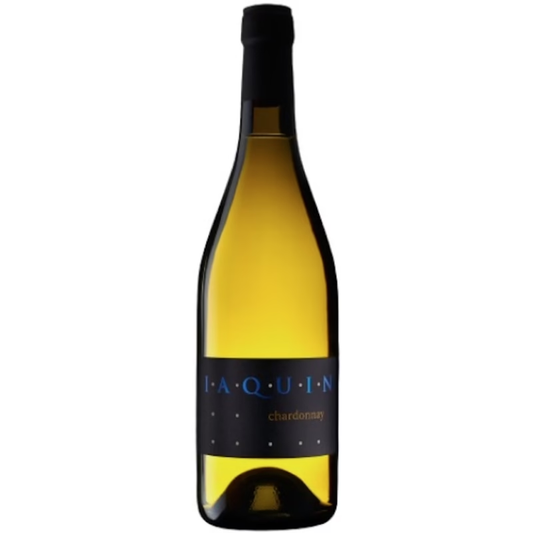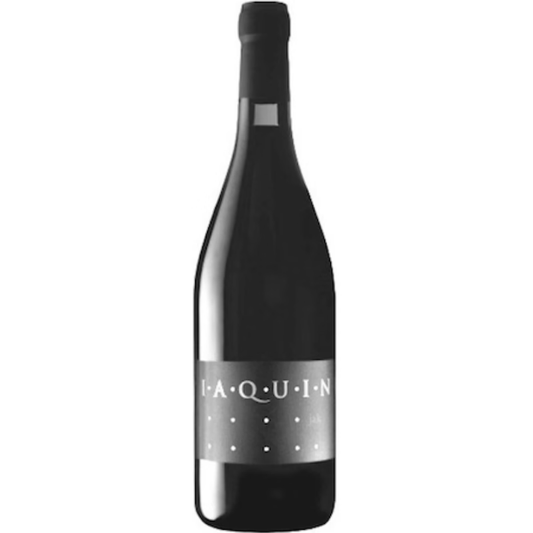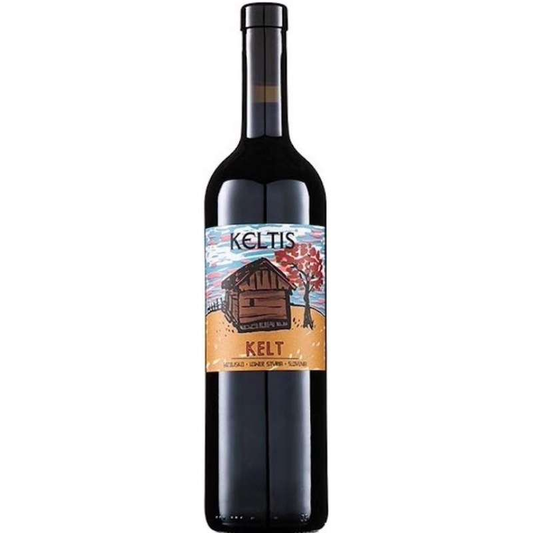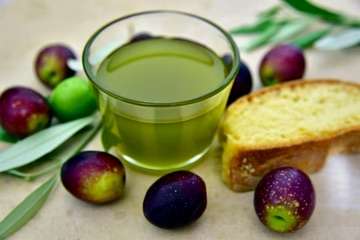Olive oil is a kitchen staple, and a culinary treasure that adds depth and richness to your Mediterranean dishes. To fully savor its delicate flavors and reap the health benefits, proper olive oil storage is key. In this guide, we’ll delve into the science behind olive oil storage and provide practical tips to maintain its quality.
Shield from Light: Dark and Opaque Containers. The first rule for olive oil storage is to shield it from light, especially sunlight. Light exposure can initiate photooxidation, a process that breaks down the oil’s compounds and leads to off-flavors. Opt for bottles made of dark glass or other opaque materials to create a protective barrier against light. And of course, store your olive oil in a dark cupboard or pantry away from direct sunlight.
Cool and Consistent Temperature. Temperature plays a crucial role in preserving olive oil. It’s best stored in a cool place with a consistent temperature between 57-70°F (14-21°C). Avoid placing olive oil near stove tops or other heat sources, as high temperatures can accelerate oxidation. A cool and stable environment slows down the degradation process, helping your olive oil maintain its freshness.
Seal Your Olive Oil Tightly to Minimize Air Exposure. Oxygen is another factor that can contribute to the degradation of olive oil. When the oil is exposed to air, oxidation occurs, leading to rancidity. To minimize air exposure, ensure that the bottle is tightly sealed after each use. Minimizing exposure to air helps maintain the oil’s quality between uses. This simple habit can make a significant difference in preserving the flavors and nutritional benefits of your olive oil.
Choose the Right Container Material. Selecting the right container material is essential for preserving the quality of olive oil. Dark glass bottles are a popular choice as they provide protection against light. Avoid plastic containers, as they may not offer sufficient protection. Opt for quality packaging to ensure your olive oil stays fresh and flavorful.
Consume Olive Oil Fresh: Use Within a Few Weeks to a Month. Olive oil is best enjoyed when fresh. Aim to consume your oil within a few weeks of opening the bottle. As time passes, olive oil may undergo oxidation and lose some of its vibrant flavors. Be mindful of the expiration date, and prioritize using the oil while it’s at its peak.
What Processes Occur After Olive Oil Is Made and Bottled?
So, what could we see if we look into the olive oil bottle? After olive oil is produced and bottled, various biological and chemical processes can occur. Over time, exposure to light, air, and heat leads to oxidative reactions and hydrolysis in the oil. This results in the breakdown of compounds, causing the oil to become rancid, lose its freshness, and develop off-flavors.
From a chemical perspective, you might observe changes in the oil’s composition due to the degradation of fatty acids and the formation of undesirable byproducts. This degradation negatively impacts the nutritional quality and taste of the olive oil. To mitigate these effects, proper storage conditions, as previously mentioned, are crucial to maintain the oil’s integrity and ensure a longer shelf life.
How Exactly Does the Light Hurt Olive Oil?
Light exposure is detrimental to olive oil due to the photooxidation process. Olive oil contains unsaturated fatty acids, particularly monounsaturated oleic acid, which is susceptible to oxidation when exposed to light. When olive oil is exposed to light, particularly ultraviolet (UV) and visible light, the energy from photons is absorbed by the unsaturated fatty acids present in the oil.
This process initiates free radical reactions in the oil, leading to the breakdown of lipids and the formation of undesirable compounds - lipid hydroperoxides. The presence of lipid hydroperoxides and other breakdown products contributes to the development of off-flavors and aromas in the oil. Olive oil becomes rancid, with a noticeable deterioration in taste and quality.
Exposure to light accelerates the degradation of chlorophyll, contributing to changes in color and further promoting oxidation. When chlorophyll absorbs light, it accelerates the oxidation of the oil, causing off-flavors and a decrease in quality.
To prevent these negative effects, it’s recommended to store olive oil in dark bottles or containers and keep it away from direct sunlight.
What is chlorophyll and why would olive oil contain it?
Chlorophyll is a green pigment found in the chloroplasts of plant cells. It plays a crucial role in photosynthesis, the process by which plants convert light energy into chemical energy. Chlorophyll absorbs light, particularly in the blue and red parts of the electromagnetic spectrum, and reflects green light, giving plants their characteristic green color.
In the context of olive oil, the presence of chlorophyll is associated with how the oil is produced. During the extra virgin olive oil extraction process, the oil is obtained by pressing the whole olives, including the skin and pits. This method introduces small amounts of chlorophyll into the oil, resulting in a greenish hue.
While chlorophyll itself is not harmful, its presence in olive oil can impact its flavor and stability. Chlorophyll can contribute to a bitter taste and may also accelerate the degradation of the oil when exposed to light. This is why extra virgin olive oils, which typically retain more of the natural compounds from the olives, may exhibit variations in color and flavor due to the presence of chlorophyll.
What Happens to Olive Oil That Sits in a Well-Lit Supermarket All Day?
Olive oil exposed to prolonged light in a well-lit supermarket undergoes photooxidation, a process accelerated by the interaction of light with unsaturated fatty acids in the oil. This leads to the degradation of the oil’s quality, resulting in the formation of off-flavors, a decrease in nutritional value, and a potential increase in free fatty acids.
The exposure to light also affects the color of the oil. For instance, if the olive oil contains chlorophyll, it can contribute to a greener hue that intensifies with light exposure. So, purchasing olive oil stored in a cool and dark section of the supermarket can help ensure a better-quality product.
But do there even exist dark sections of supermarkets? And if they do, who would dare to wander there? Ok, let’s assume some supermarkets have specific areas where products sensitive to light, such as olive oil are stored away from direct light exposure. Did you hear that, supermarket guys? This is a free business idea for you! Such sections could be designed to preserve the quality of light-sensitive items. Your customers will visit these areas if you educate them about the negative effects of light on olive oil and other products.
How Your Olive Oil Loses Its Taste When Improperly Stored
This happens as a result of series of chemical reactions. Here’s a detailed explanation:
Oxidation: One of the main contributors to the loss of taste in olive oil is oxidation. When the oil is exposed to air (oxygen), especially in the presence of light and heat, oxidative reactions occur. Unsaturated fatty acids in the oil are particularly susceptible to oxidation, resulting in the formation of free radicals.
Free Radical Reactions: Free radicals generated during oxidation initiate chain reactions, causing a cascade of chemical changes in the oil. These reactions lead to the breakdown of lipids, forming volatile compounds and altering the oil’s composition.
Rancidity Formation: Oxidative breakdown products contribute to the development of rancidity. Hydroperoxides, formed in the initial stages of oxidation, further break down into aldehydes, ketones, and other compounds that impart unpleasant flavors and aromas to the oil.
Loss of Phenolic Compounds: Olive oil contains phenolic compounds with antioxidant properties that contribute to its characteristic taste and health benefits. Oxidative processes degrade these phenolic compounds, reducing the oil’s antioxidant capacity and altering its flavor profile.
Hydrolysis: If the oil is exposed to moisture, hydrolysis reactions occur, leading to the breakdown of triglycerides into free fatty acids. This contributes to a sharper and less pleasant taste.
Microbial Growth: Improperly stored olive oil, especially if contaminated with water, become a breeding ground for microorganisms. Bacteria, molds, and yeast proliferate, introducing off-flavors and further degrading the taste.
Accelerated Spoilage: Warm environments encourages the growth of microorganisms, contributing to the spoilage of the oil. Bacteria, molds, and yeast thrive in these conditions, leading to off-flavors and potential health risks.
What are the ideal conditions for storing olive oil? And how quickly should olive oil be consumed after opening the bottle?
Lighting: Store olive oil in a dark or opaque container to protect it from light. Exposure to light, especially sunlight and fluorescent lighting, accelerates the oxidation process and degrades the oil’s quality.
Temperature: Keep olive oil in a cool place, ideally between 57-70°F (14-21°C). Avoid storing it near stove tops or other heat sources. Cooler temperatures slow down oxidation and help preserve the oil’s freshness.
Air Exposure: Seal the bottle tightly to minimize contact with air. Oxygen contributes to the oxidation of the oil, leading to rancidity.
Container Material: Choose bottles made of dark glass or materials that protect against light. Avoid containers made of plastic, as they may allow light to penetrate.
Well, you get the idea… To preserve the taste, it’s crucial to store olive oil in a cool, dark place, away from direct sunlight and heat, and in a sealed container to minimize exposure to air.
As for consumption after opening, it’s advisable to use olive oil within six months to a year for optimal quality. The fresher the oil, the better its flavor and nutritional benefits. Additionally, reseal the bottle promptly after each use to limit air exposure.
Proper storage and timely consumption ensure that you enjoy the full spectrum of flavors and health benefits that your high-quality olive oil offers. After all, you paid good money for your real fresh farm olive oil and It’s worth taking good care to keep it fresh and tasty for as long as possible.

